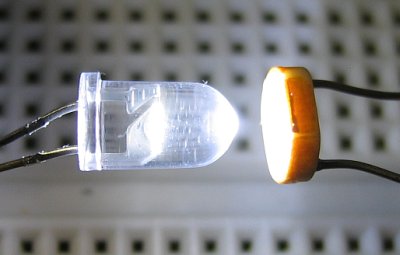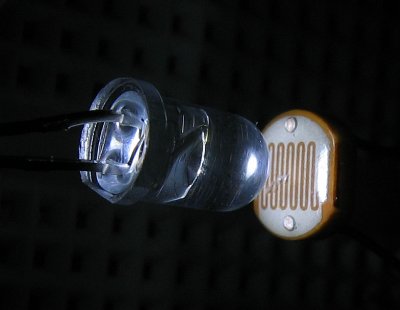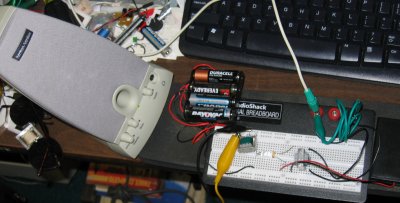Be careful--I used an LED because I destroyed a cheap laser pointer when trying the first circuit. The problem with it is the sound card audio is approximately 1 Volt AC at max, and this gets converted to ~12.5V on the other side (although I found output was usually around .5 V on the sound card and ~4 to 5V on the other side of the transformer). At least that's what I measured--I've seen people read 4V on sound cards, but I don't know which is correct.
I ended up using a white LED since it was my brightest LED, but I also have a superbright red LED that seems to work even better.



This is a 343KB video of the circuit in action. I block the beam and the sound volume dips.
I hate using the future tense on the web, so I'll say I promise to post a circuit diagram soon... --- and here it is! (keep in mind it's a CdS photocell, not a photodiode. I couldn't find the symbol in TinyCAD).
Forrest Mims wrote the book on this sort of thing, and there is a better circuit in Getting Started in Electronics, simply the best starter book for people interested in electronics and how things work.
1 comment:
Its that really work ?? If ever that is another method to make a circuit. Nice idea ... Thanks for sharing another method...
Post a Comment